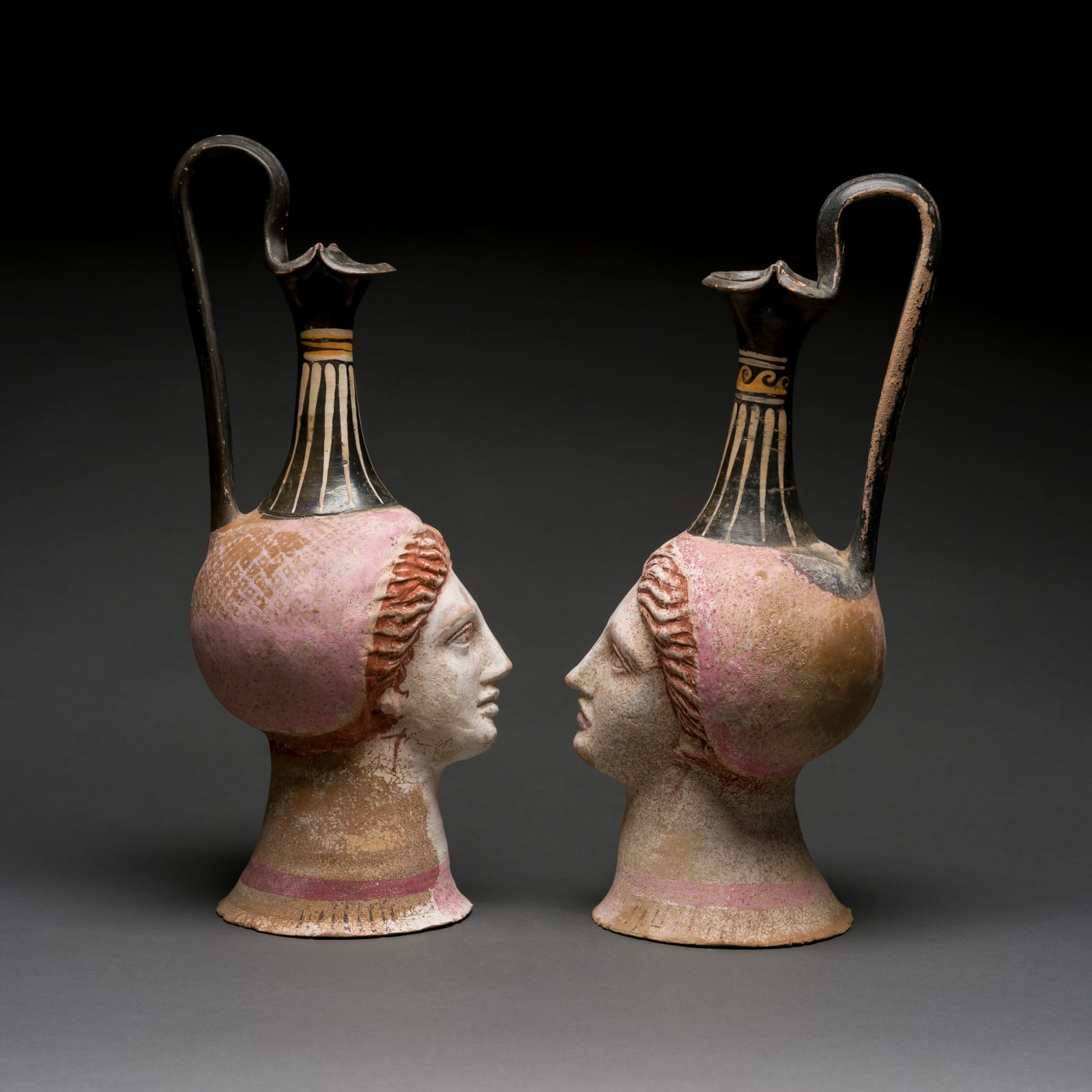Canosan Oinochoe in the Form of a Woman's Head, 350 BCE - 250 CE
Terracotta
4.75 x 15.5
PF.0340
Further images
This remarkable vessel is of buff-coloured clay with black glaze on the neck and handle. The neck is adorned with white rays and a band filled with a wave motif....
This remarkable vessel is of buff-coloured clay with black glaze on the neck and handle. The neck is adorned with white rays and a band filled with a wave motif. The body is in the shape of a woman’s head, perhaps a goddess or simply an idealization of feminine beauty. The hair is centrally parted and brushed to each side in undulating strands. The back of the hair is covered by a saccos with a pink lattice design. This type of vase clearly demonstrates the development from red-figure to a polychrome technique that took place in the second half of the fourth century BC. Inspired by Attic examples, the potters at Canosa produced a new version distinctive for its rich colouring. Head vases were a specialty of this area and their bottoms were often intentionally left open, which excluded any practical use for them. They were placed in tombs, often in pairs, as offerings for the dead.











